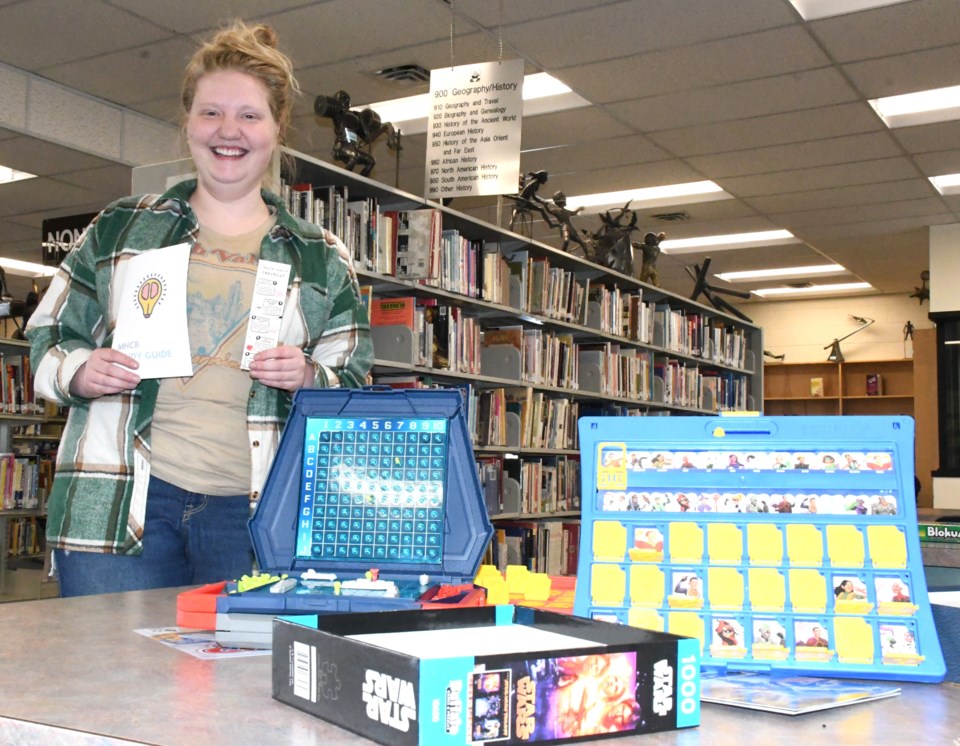MOOSE JAW — Final exams can be stressful for students, so one high school recently took the approach of helping youths manage their mental health using activities such as yoga, crafts, board games, and tea time.
A.E. Peacock Collegiate’s semester 1 final exams occurred from Jan. 27 to 30, and staff from Prairie South School Division’s mental health capacity building (MHCB) program used the library to help students manage stress, stay focused and study smarter.
Students who ventured to the library received study tips and tools, stress management strategies, brain-break activities to increase their productivity, and a supportive environment in which to study.
Each day also featured a different activity, including yoga at lunch, a crafting and beading session, board games and puzzles, and tea and snacks. There were also studying supplies students could acquire, such as highlighters and pencils.
Tallissa Edwards, a mental health promoter with the MHCB program, explained that this is the first year Prairie South has run the program, so it has been exciting to support it. She and her colleague Layne Gosling will be based at the school for several years.
“Our goal is to put tools in the students’ toolbelts so they’re managing their own mental health themselves,” said Edwards. “Then we’re providing them access to the resources that are available in the community.”
The MHCB team also works with teachers to promote the program and communicates with parents to ensure the skills the students learn in school are being used at home, she continued.
The program focuses mostly on preventative care, something the provincial government realized needed to be addressed because the pre-existing tools were lacking, said Edwards. So, the province took inspiration from an Alberta-based program and adapted it for Saskatchewan.
The MHCB team focuses on mental health literacy, which educates youths about areas of their lives they can control, such as eating, sleeping and socializing, which are part of a sound psychological foundation, she continued. The team also teaches “grounding techniques” for when youths lack control over issues.
The division produced a mental health study guide for students to use during finals that offered tips on how to “crush their exams and stay balanced while doing it.” There are problem-solving tasks to complete, such as learning how to study — something Grade 9s are still developing — and coping strategies for tests and throughout the year.
“The big one is just helping the kids through problem-solving, so being aware that stress is normal (and) stress is a good thing,” said Edwards. “We’re helping them reframe their stress … and guiding them through what they can do to prepare.”
Overall, Edwards noted that the week went well, and more students attended activities than expected. The team had hoped to see 15 kids daily, but 20 came on the first day during one “brain break” and about 30 attended daily thereafter.
“I thought that maybe it would be just Grade 9s, but it’s been a very healthy balance across all grades, so it’s pretty exciting, actually,” she said. “And we didn’t have to bribe them with food; they kind of just came on their own, which was nice.”
Most activities kept students off their screens, which was important since such devices contribute to higher stress levels, Edwards continued. Many youths usually scroll on their phones at night, while studies show how harmful that can be.
Furthermore, the problems youths face today are different than 10 or 20 years ago because there is pressure to always look good on social media, which “is not feasible,” she said. Moreover, everyone is “living in an overstimulated state in general,” so it’s a lot for youths to handle.
The MHCB team is not “glorifying mental illness,” but is giving students tools to be more resilient and prevent them from self-diagnosing their problems, Edwards added. So far, the kids have accepted this help without reservation.




